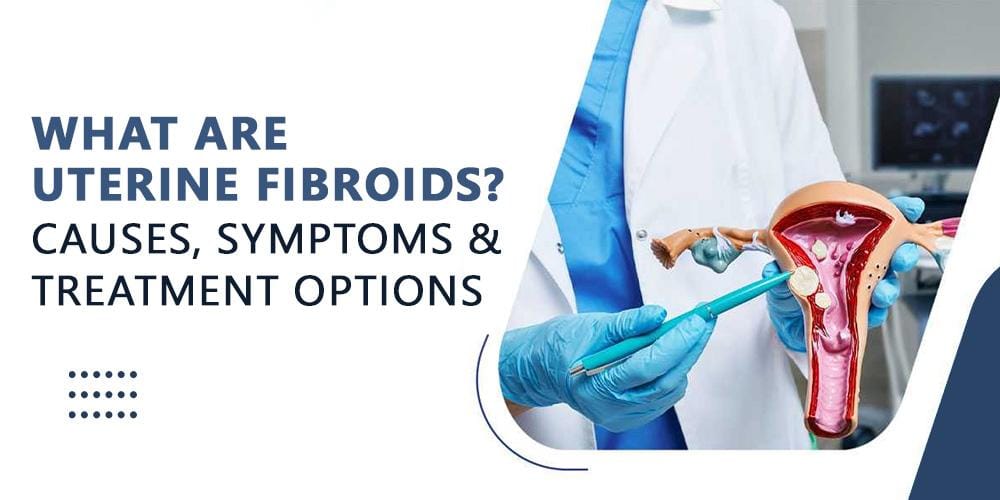If you have managed to survive years under unbearable pain, excessive bleeding, or persistent discomfort with symptoms such as fibroids, endometriosis, or adenomyosis, you yearn to experience complete eradication of pain. After non-surgical treatment ceases to apply, the most successful solution emerges in the form of laparoscopic hysterectomy, or rather removal of the uterus. In spite of the idea of open surgery and recuperation for a couple of weeks paralyzing you, a laparoscopic hysterectomy surgery in Jaipur shall give you immediate relief with no side effects.
What Makes Laparoscopic Hysterectomy Surgery a Boon?
Laparoscopic hysterectomy surgery has transformed the field of gynecological treatment. Hospital high-tech treatment in today’s world, such as laparoscopic hysterectomy surgery in Jaipur, has been instrumental in saving thousands of lives. This newest minimally invasive surgery provides patients with a permanent solution to gynecologic issues with much quicker and less painful recovery. This blog uncovers exactly what is a laparoscopic hysterectomy, what is the procedure during laparoscopic hysterectomy surgery, and why selecting a specialist expert in Jaipur to undergo laparoscopic hysterectomy matters.
Understanding the Procedure: What is a Laparoscopic Hysterectomy?
A laparoscopic hysterectomy is the removal of the uterus through small incisions, typically ranging in size from 0.5 to 1 centimeter. In place of a long, 6 to 8 inch incision which must come through in order to conduct traditional abdominal surgery, the surgery itself occurs through a specialty camera and slim surgery instrumentation.
Keyhole Precision, Maximum Result
It’s even referred to as “keyhole surgery” due to:
Tiny Incision: Three to four small cuts in the abdomen, usually around the bellybutton.
Visualization: A thin tube with a high-definition camera inside, known as a laparoscope, enters via a single incision and casts an enlarged image of the pelvic organs onto a monitor.
Removal: These refinements form the basis of the procedure, which enables the surgeon to gently operate and prevent trauma to adjacent tissues. This technique comes in handy in a vast array of conditions such as the removal of big fibroids, treatment of severe endometriosis, and correction of recurrent, abnormal uterine bleeding. This indeed is contemporary laparoscopic hysterectomy surgery.
These refinements form the basis of the procedure, which enables the surgeon to gently operate and prevent trauma to adjacent tissues. This technique comes in handy in a vast array of conditions such as the removal of big fibroids, treatment of severe endometriosis, and correction of recurrent, abnormal uterine bleeding. This indeed is contemporary laparoscopic hysterectomy surgery.
The Timeline: How Long Does a Laparoscopic Hysterectomy Take?
How long a laparoscopic hysterectomy takes will depend on several factors, but in most instances, it’s much faster and more efficient than with open surgery.
Factors Affecting Surgery Time
The average time for a laparoscopic hysterectomy operation is between 1.5 and 3 hours, though the length of the surgery can vary.
- Type of Hysterectomy: A Supracervical hysterectomy, which leaves the cervix intact, takes less time than a Total Hysterectomy, which removes both the uterus and the cervix.
- Complexity: Extensive scar tissue (adhesions) due to multiple surgeries or aggressive, infiltrative endometriosis will make the procedure longer. The removal of very big or multiple uterine fibroids makes the procedure longer since the surgeon will deliberately dismantle the tissue in order to remove it via the small keyhole incisions.
- Adjoining Procedures: If the surgeon also removes the fallopian tubes or ovaries, the overall laparoscopic hysterectomy operation time increases by approximately 30 minutes to one hour.
The overall goal is always safety and thoroughness, ensuring all diseased tissue is removed, regardless of how long it takes to do a laparoscopic hysterectomy.
The Primary Benefit: Recovery from Laparoscopic Hysterectomy
The strongest argument in favor of a laparoscopic hysterectomy surgery is quick, comparatively painless recovery. The comparison with open surgery, which requires weeks of limited activity, is striking and resolves the patient’s big pain: picking up life fast.
Comparison to Open Surgery
| Recovery Metric | Laparoscopic Hysterectomy | Traditional Abdominal Hysterectomy |
| Hospital Stay | Often just one day (24 hours). | Three to five days. |
| Pain Level | Significantly less; manageable with oral painkillers. | Severe; often requires strong narcotics for days. |
| Return to Work | Light activities/desk work often within 1 to 2 weeks. | Minimum four to six weeks. |
| Scarring | Minimal, nearly invisible scars. | Large, permanent, visible scar (6-8 inches). |
Studies show that the average hospital stay for laparoscopic hysterectomy is less than half that of an open procedure, confirming the massive benefit of the keyhole approach.
Actionable Recovery Guidance
Recovery from laparoscopic hysterectomy also requires close protection even if you recover quickly. Internal healing does not occur overnight.
Move Early: Early movement on the surgery day or the following day promotes circulation and minimizes the chance of blood clot.
Avoid Lifting: Do not lift any weight exceeding 4 kgs at least four to six weeks. Straining may compromise the internal healing process.
Manage Pain: Mild shoulder discomfort will probably develop during the first day or two after surgery due to gas that’s introduced into the abdomen to inflate the abdomen during surgery, it’s temporary and normal. Take pain medication prescribed by your doctor.
Full recovery to normal energy and limitless activity typically takes four to six weeks, although pain in the early stages soon subsides, and the laparoscopic hysterectomy operation becomes significantly more appealing.
Choosing Advanced Care in Jaipur
When choosing a specialist to perform your laparoscopic hysterectomy surgery, experience comes first. Choose to have a surgeon who underwent specialized training on advanced gynecologic laparoscopy, and not on general surgery. Quality and quantity of procedures done equate to the effectiveness and the safe conduct of your laparoscopic hysterectomy procedure.
The Specialist’s Advantage
An experienced laparoscopic surgeon in Jaipur employs up-to-date techniques and sophisticated energy systems that equate to the benefits you get: less blood loss, fewer complications, and less internal scarring, that often result in post-op discomfort. Specialized center high success rates confirm that laparoscopic hysterectomy achieves a safe, permanent solution to disabling uterine problems.
If you are currently researching treatment options for uterine fibroids, this article can help frame your decision.
Conclusion
You owe yourself a permanent solution to chronic gynecologic pain and bleeding. Laparoscopic hysterectomy surgery is the contemporary solution that strikes a perfect balance between full elimination of symptoms and a promise to your quality of life. With its effectiveness and minimal recovery time, this state-of-the-art procedure stands out as the ultimate solution to dealing with issues such as fibroids and endometriosis.
Do not put off your relief out of concern over too much down time. Schedule an appointment with a specialist in laparoscopic hysterectomy in Jaipur today to go over your personal case, verify your choices, and make the final step toward a pain-free life. For women managing concurrent chronic pain issues, understanding other gynecological conditions is key.
Frequently Asked Questions (FAQs)
1. Does a laparoscopic hysterectomy operation trigger early menopause?
A patient will experience menopause after laparoscopic hysterectomy surgery if the ovaries have also been removed concurrently. If the ovaries are not removed, they will continue to function normally, leading to menopause at the expected age. Ovary removal and surgery of laparoscopic hysterectomy are two procedures that are exclusive of each other.
2. How long does it take to do a laparoscopic hysterectomy if I have large fibroids?
If you have large fibroids, then the total time the procedure of laparoscopic hysterectomy may take could be up to 2.5 hours or even 3 hours, depending on how large and how many fibroids you have. The physician also has to morcellate (cut down) the large tissue in a manner that allows them to remove it through the small incisions, so this lengthens the procedure compared to non-fibroid surgery.
3. What is the most common discomfort during recovery from laparoscopic hysterectomy?
Shoulder pain due to irritation of the diaphragm with the presence of carbon dioxide residuals during post-laparoscopic hysterectomy recovery is the most prevalent symptom. This pain, however, becomes temporary and resolves in 24-48 hours. Incisional pain remains moderate in severity and controlled with scheduled medication.
4. What are the key criteria for choosing a specialist for laparoscopic hysterectomy surgery in Jaipur?
In selecting a specialist to carry out laparoscopic hysterectomy surgery in Jaipur, highest priority should go to an individual with considerable minimally invasive gynecologic fellowship experience, who conducts high volumes of these operations, and who operates in a facility with up-to-date laparoscopic capabilities. Specialization occurs primarily with respect to protection.
5. What is a laparoscopic hysterectomy used for besides fibroids?
If you wish to know what a laparoscopic hysterectomy is used to treat besides fibroids, you should understand that it may treat disabling endometriosis, adenomyosis, untreatable pelvic pain that could no longer be managed with other treatment modalities, and uterine prolapse. It presents a permanent solution to disabling uterine conditions.






